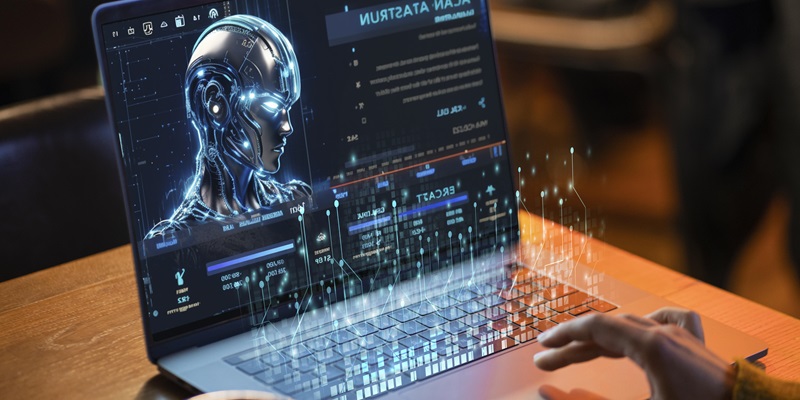In today’s rapidly evolving technological landscape, organizations are constantly searching for ways to enhance efficiency and productivity. One promising solution that has caught the industry’s attention is Generative Artificial Intelligence (GenAI), capable of automating various tasks. However, despite its potential, the widespread adoption of GenAI within organizations remains limited. This article explores the reasons behind this restricted acceptance, the challenges faced by IT teams in leveraging GenAI, and the areas where it falls short.
Limited Adoption of GenAI in Organizations
While GenAI holds great promise for streamlining operations, many organizations have been slow to embrace it across different tasks. The potential of GenAI lies in automating essential processes such as data analysis, script generation, and incident response. However, in reality, only a few organizations have fully integrated GenAI into their operations.
Restricted Use of GenAI by IT Teams
Today, IT teams are primarily utilizing GenAI in narrow and specific ways, if at all. Due to factors such as limited understanding, resources, and infrastructure, the typical IT team’s adoption of GenAI remains confined. They may experiment with GenAI in incident response workflows or for generating scripts, but they rarely utilize it comprehensively across IT operations.
Challenges in Building Effective GenAI Tools
Developing GenAI tools that effectively address organizational needs and use cases poses significant challenges. Designing GenAI applications that truly deliver on their promises requires overcoming hurdles such as training models with diverse datasets, ensuring robust accuracy, and addressing ethical concerns surrounding bias and fairness. The complex nature of building reliable GenAI tools contributes to the limited availability and effectiveness of such solutions.
The Limitations of GenAI: Cannot Replace Humans
While GenAI can speed up workflows in various IT operations, it cannot replace the critical thinking and decision-making capabilities of humans. Despite the portrayal of AI as a super-intelligent entity, GenAI is still far from achieving human-level cognition. It has its limitations in understanding context, reasoning, and handling complex and nuanced issues, necessitating human involvement.
GenAI Accelerating Workflows for Incident Response with Human Assistance
In incident response workflows, GenAI can accelerate processes by automating routine tasks such as log analysis, anomaly detection, and generating alerts. However, critical decision-making and handling intricate issues still require human expertise. GenAI serves as a powerful tool to support and augment human responders, but its effectiveness lies in collaboration rather than replacement.
Generative AI in Script Generation: Copilot and ChatGPT
Generative AI tools such as Copilot and ChatGPT have gained attention for their ability to streamline the process of script generation. These tools can assist IT teams by automatically generating code, thereby improving their productivity and efficiency. However, the capabilities of Generative AI (GenAI) in producing complex and intricate scripts are still limited, and no vendor has yet focused on addressing this particular use case.
The Difficulty of GenAI in Producing Complex Scripts
Producing complex scripts that account for variables, dependencies, and nuanced requirements remains a challenging task for GenAI. The lack of focus from vendors on this specific use case hampers the true potential of GenAI in assisting IT operations teams.
Unmet IT Operations Needs that GenAI Does Not Address
Despite the broad range of use cases that GenAI theoretically has the capability to address, there are many IT operations needs it fails to fulfill. For instance, tasks such as network monitoring and observability, infrastructure management, and IT governance require domain expertise and context that GenAI currently lacks.
The Unlikelihood of GenAI Assisting IT Teams in Monitoring and Observability
Unless monitoring and observability vendors develop specific tools to cater to this need, it remains unlikely for GenAI to be able to aid IT teams in this domain. Real-time analysis, anomaly detection, and infrastructure optimization demand a deep understanding of complex network architectures, making human intervention indispensable.
Specific Use of GenAI by Some IT Operations Teams
Despite the limitations and challenges, some IT operations teams have leveraged GenAI for certain specific tasks. These teams have found success in utilizing GenAI for incident response acceleration, code generation, and other limited use cases where it complements human expertise rather than replaces it.
While GenAI holds tremendous potential, its adoption and effectiveness within organizations are currently limited. The challenges in building reliable GenAI tools, coupled with its inability to replace human judgment and address intricate IT operations needs, pose significant barriers. Nevertheless, GenAI can be a valuable asset when integrated strategically, working alongside humans to augment and accelerate certain tasks. The future lies in further refining GenAI models and addressing its limitations to unlock its full potential in IT operations.

